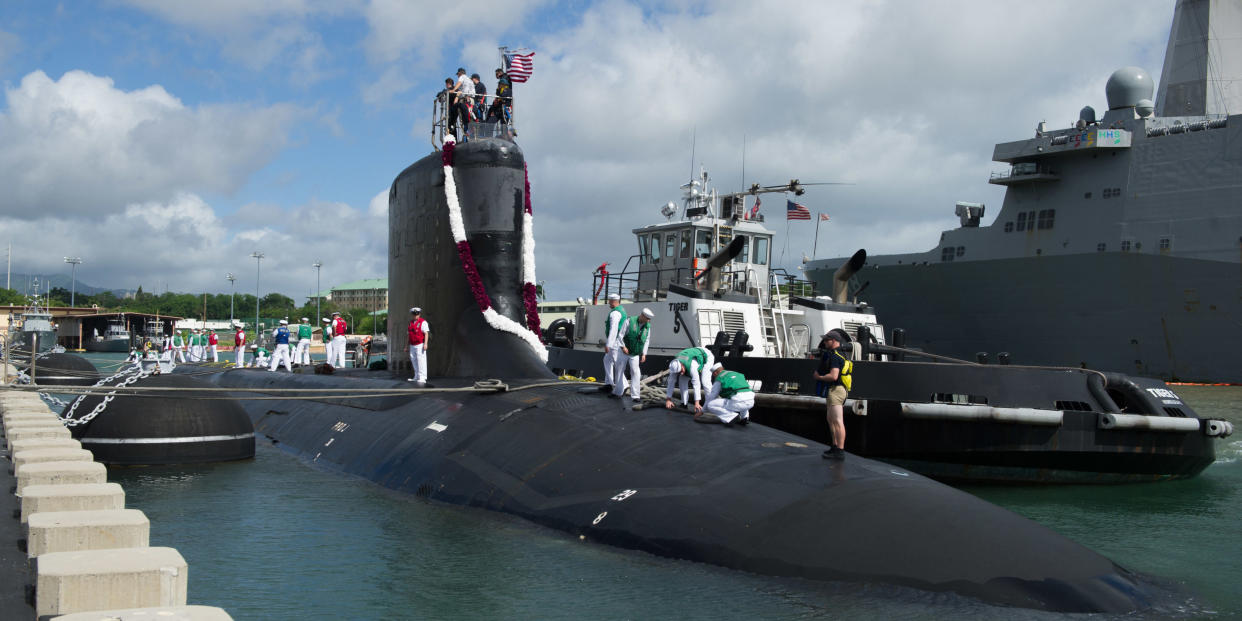Navy Subs Just Can't Stop Losing Their Noise-Dampening Skins

The U.S. Navy's Virginia-class submarines are the most advanced submarines in the world. Nuclear-powered and capable of launching cruise missiles and torpedoes, they're formidable underwater opponents. But they still haven't licked one problem: Their rubber coatings are falling off.
The Honolulu Star Advertiser has an article about the return of the Virginia-class sub USS Mississippi to its homeport of Pearl Harbor. In the photo accompanying the article, the five year old Mississippi is missing large amounts of the coating, called Special Hull Treatment (SHT), which appears have peeled away while the sub was at sea. The photo is viewable here.
The key to a submarine's survival is evading detection. One way U.S. Navy submarines evade detection is by lowering their noise profile. So-called anechoic coatings consist of rubber tiles that are affixed to the hull with glue, coating as much of it as possible. The rubber tiles break up sound waves that bounce against the hull, reducing the submarine's acoustic signature and making it more difficult to detect via sonar. They also deaden sound emanating from inside the submarine.
The problem, according to naval expert Norman Polmar, is the glue that affixes the tiling to the hull. The glue is exposed to a wide variety of environmental conditions, including big temperature swings as well as the pressures of operating at 1,000 feet beneath the surface. The friction of moving underwater tugs at the coating, and running into objects contributes to it gradually sloughing off.
The SHT problem first surfaced in the civilian world in 2010, when the blog NextNavy brought the issue to light. The Navy has been aware of the issue since 2006 and has been trying to fix it. A 2014 article by the Navy Metalworking Center claimed it had developed an improved process that would go on new submarines starting in 2018, and retrofitted to older subs in 2016. It is not known if Mississippi had received the new coating process.
You Might Also Like

